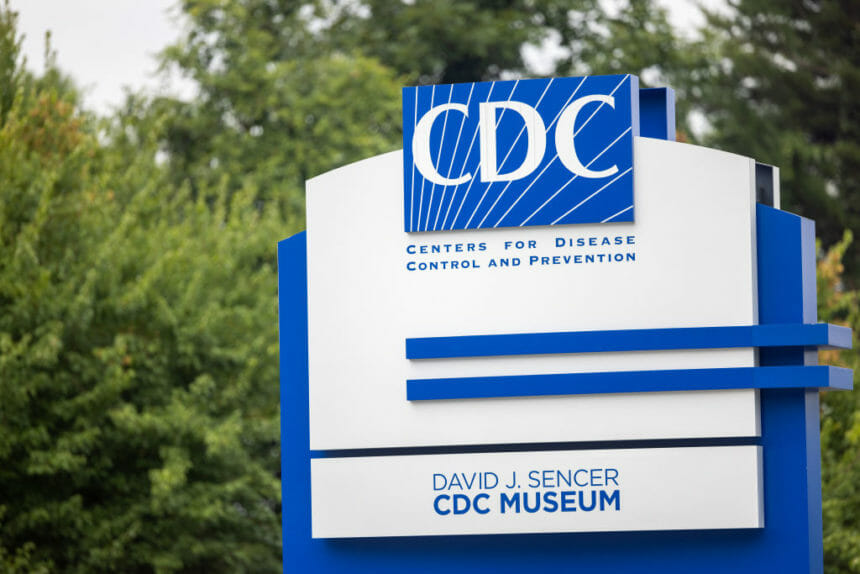The COVID-19 pandemic is largely in the rearview mirror, perhaps best reflected in the continued drop in vaccinations and fatigue around booster shots.
However, public health officials at the Centers for Disease Control and Prevention (CDC) are still grappling with the fallout from the pandemic when it comes to health communications.
Vaccine hesitancy is just one of the litany of issues the CDC faces as it tries to revamp its communications strategy following tumult and politicized criticism during the worst of the multi-year pandemic.
“Many people got to know the CDC through COVID-19,” CDC director Dr. Mandy Cohen told MM+M. “This year I want people to learn more about the role of public health and the CDC in protecting the health of every American and improving lives across the country. This year, the CDC is focused on showing people how the agency is working for them.”
The trouble for the CDC started in 2020, when the COVID-19 outbreak led to widespread confusion and conflicted messaging. But in 2021, public health experts began calling out the agency for flip-flopping on masking guidance and not being clear enough about whether vaccinated individuals were at risk of breakthrough infections.
A voice meant to be authoritative on public health was criticized as coming off uncertain, unclear and confusing when it came to the rapidly-evolving science.
Trust in the agency plummeted during the pandemic, with only about one-third of Americans saying they trusted the CDC to provide accurate health information, according to a recent survey published in Health Affairs. Strikingly, 10% of people surveyed said they had no trust at all in public health agencies.
By 2022, then-CDC director Dr. Rochelle Walensky announced that the agency would undergo a full evaluation to examine its “structure, systems and processes” in the wake of some of those communications blunders and data shortcomings. That was part of its overall Moving Forward initiative, which sought to revamp and modernize how the agency responded to public health crises.
However, the authors of the recent Health Affairs report argued that the public’s distrust isn’t going away anytime soon — and the agency still has plenty of work to do.
“[P]ublic trust in government and other major institutions across U.S. society has been declining for decades, and the pandemic has raised concerns about trust in public health agencies in particular,” the authors wrote. “Opportunities for misinformation to take root in the current social and traditional media environments raise concerns that trust will decline further.”
In July 2023, Cohen was sworn in as the new director after previously serving as North Carolina’s health secretary and holding various healthcare executive positions, including a stint as CEO of Aledade Care Solution.
Since taking the helm at the CDC, Cohen has made rebuilding trust in the agency one of her main priorities, repeatedly bringing it up in speeches and interviews as being a “critical foundation for a healthy society.”
Cohen has emphasized three aspects of rebuilding public trust at the CDC: transparency, solid execution of what the agency says it’s going to do, and rebuilding relationships as well as partnerships.
“I recognize that we must address misinformation around key health topics,” Cohen told MM+M. “At CDC, our communication needs to be transparent, quick and clear — we must flood the zone with good information.”
It also means honing the CDC’s voice into one that acknowledges when it doesn’t have all the answers right away. With public health crises marked by constantly-evolving science, the CDC will have to be transparent about when its information may change on a day-to-day basis.
Cohen also underscored the need for the agency to build partnerships with communities, lawmakers, government partners — and healthcare professionals — to address the issue of politicization around public health. She noted that during her time as director, she has met with communities across the country for this express purpose.
“Through these meetings, it’s been clear we share a common goal of protecting health,” she said. “We’re all humans at the end of the day, and making sure we can find common ground matters. We need partnerships where we can sit together, even if we don’t agree on everything, and have respectful dialogue to find solutions.”
The CDC has since launched several new ad campaigns in response to low vaccination rates, in which the agency is testing out new ways of crafting messages with the issue of politicization in mind. Those include its “Wild to Mild” campaign, rolled out in the fall, which sought to put a playful twist on communicating the preventive impact a vaccine can have on the severity of the flu.
At the time, Erin Burns, associate director of communications for the influenza division at the CDC, told MM+M that the campaign was part of the CDC’s greater effort to “regain reputation.”
The agency tried to incorporate that mindset into the design of the campaign, aiming to reach vaccine hesitant Americans in a different way than in the past. The campaign acknowledged that a flu vaccine may not prevent someone from contracting the illness entirely — but also underscored that what it does do is protect someone from severe illness, hospitalization and death.
“Part of [regaining trust] in a campaign like [Wild to Mild], is being transparent about what the flu vaccine may not do — but also what it can do,” Burns told MM+M. “[People felt like], ‘This makes me feel better about the CDC because I feel like they are being transparent and delivering a message that is truthful.’”
Cohen noted she was excited to build on that momentum moving into 2024, “making sure people know about the unique role of the CDC in protecting health and improving lives in every community.”







